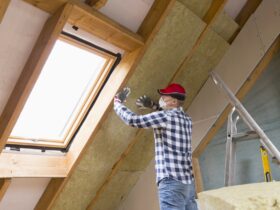The cities of Thailand are constantly evolving, with Bangkok’s skyline serving as a testament to rapid urban development. As populations grow and urban centres become denser, the need for efficient, sustainable, and comfortable living spaces is more pressing. Smart building automation is at the forefront of this transformation, integrating technology directly into the structures where we live and work.
This technology connects a building’s core systems, such as lighting, climate control, and security, onto a single, intelligent network. By using sensors and data analysis, smart building automation solutions optimise a building’s performance in real time. This leads to significant energy savings, reduced operational costs, and an enhanced experience for occupants. In a climate like Thailand’s, managing cooling and energy use is a constant challenge, making these systems particularly valuable.
The application of this technology is changing how we interact with our environment. Imagine an office that adjusts its lighting and temperature based on the number of people in a room or a residential tower that can predict maintenance needs before a system fails. This is the practical reality that intelligent building systems deliver. For Thailand, adopting these technologies supports national goals for sustainability and positions its cities as modern, future-ready hubs.
Enhancing Efficiency in a Tropical Climate
Energy consumption is a major concern for building operators in Thailand, where air conditioning accounts for a large portion of electricity usage. Smart buildings directly address this by using advanced HVAC (Heating, Ventilation, and Air Conditioning) systems. These systems learn occupancy patterns and analyse external weather conditions to cool spaces only when and where needed. This intelligent control prevents energy waste from cooling empty rooms or over-cooling occupied ones.
Additionally, smart lighting systems contribute to energy reduction. Motion sensors ensure lights are on only when a space is in use, while daylight harvesting sensors can dim artificial lights when natural sunlight is sufficient. For large commercial buildings in cities like Bangkok and Chiang Mai, these automated adjustments can lead to substantial financial savings and a smaller carbon footprint, aligning with a global push towards greener urban environments.
Improving Quality of Life for Residents
Beyond efficiency, smart building automation significantly improves the quality of life for people inside. Automated systems create a responsive and comfortable environment. For instance, air quality sensors can monitor CO2 levels and pollutants, automatically increasing ventilation to ensure healthier indoor air, a feature of growing importance in dense urban areas.
Security is another area enhanced by automation. Integrated systems can provide seamless access control, real-time surveillance, and instant alerts for any unusual activity. For residents in a high-rise condominium, this means greater peace of mind. The convenience of a building that anticipates your needs—from pre-cooling your apartment before you arrive to simplifying visitor management—redefines modern urban living. As Thailand continues to develop, these intelligent structures will become fundamental to creating cities that are not just bigger, but better to live in.






